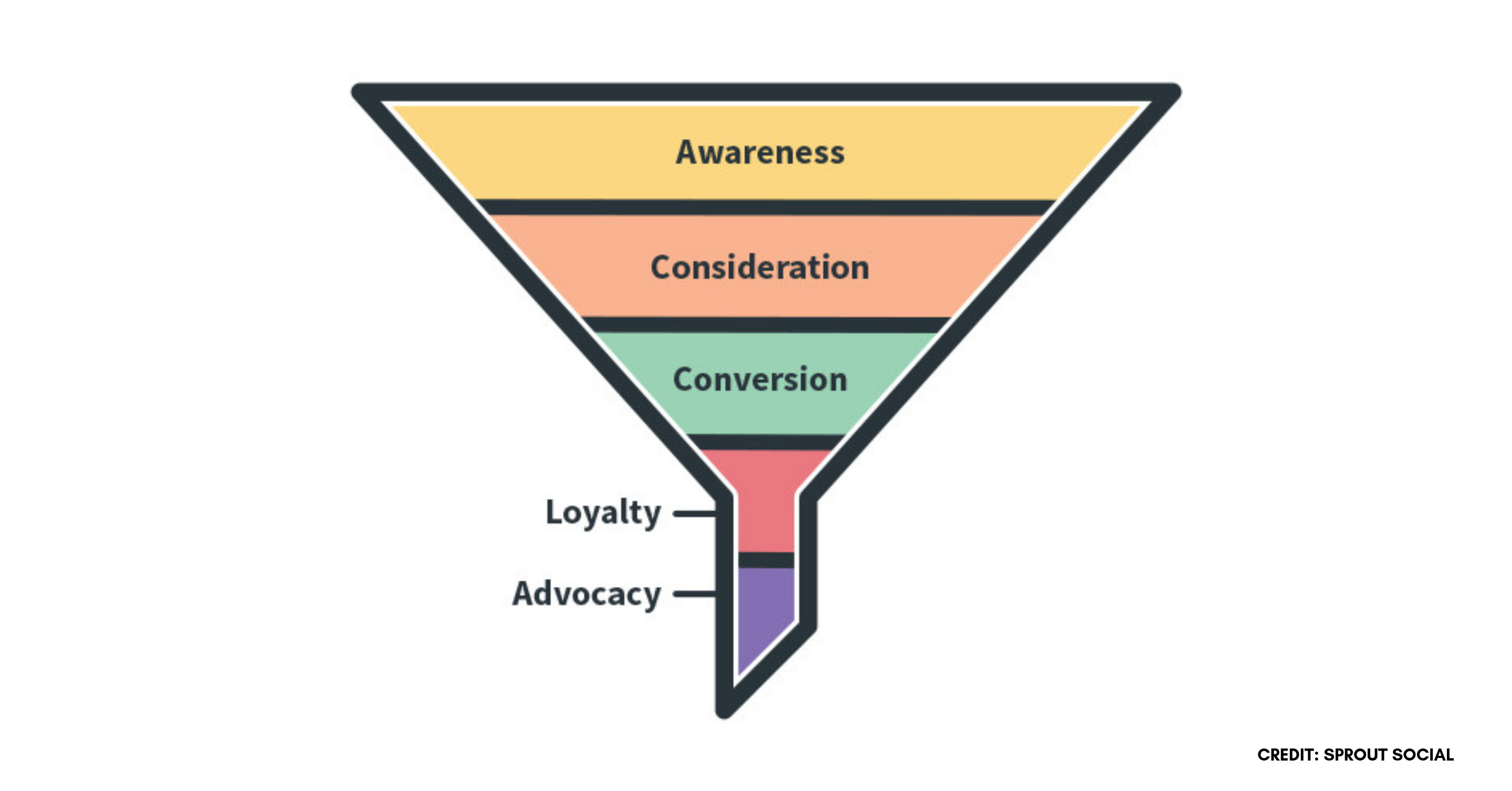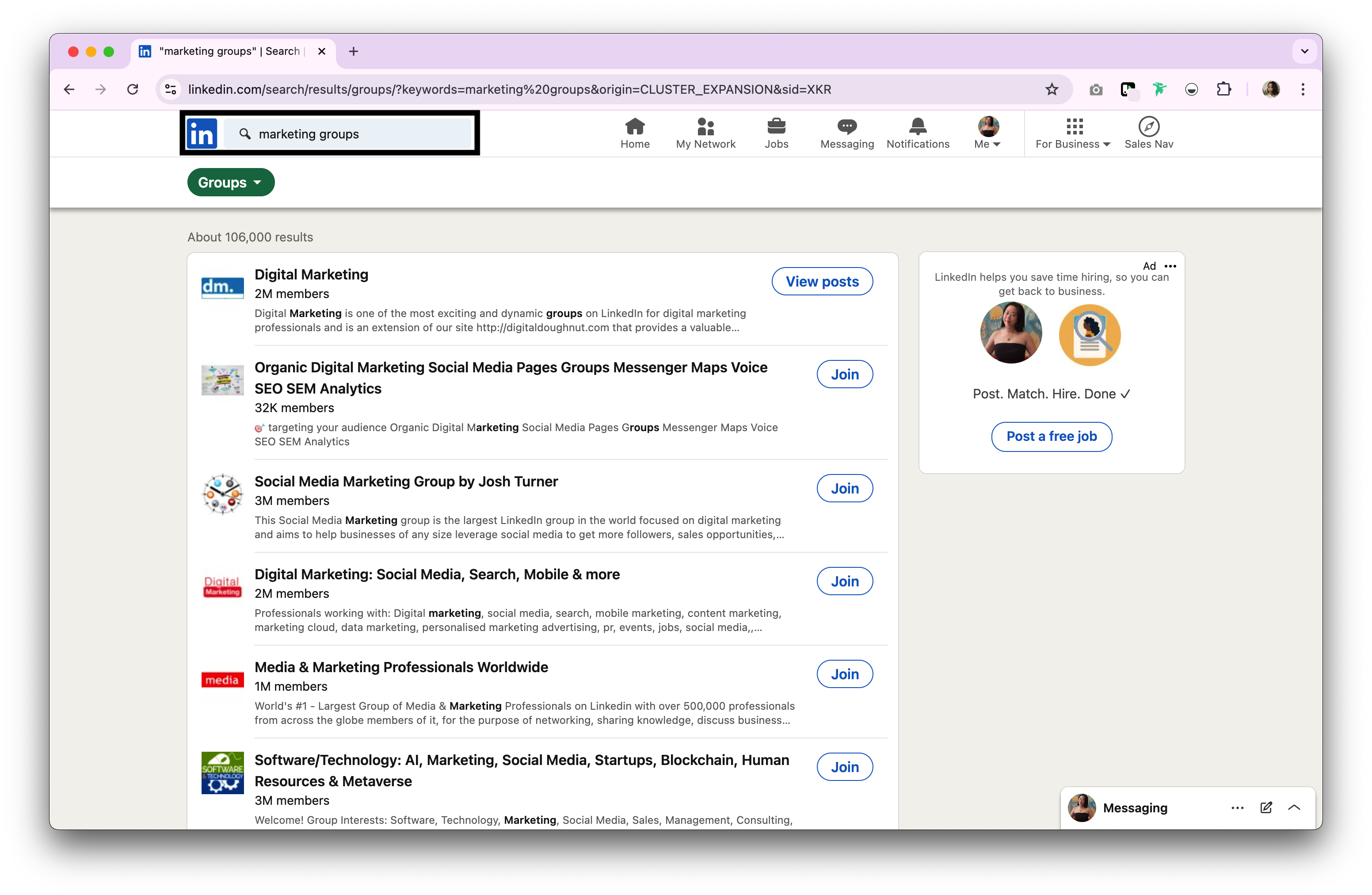Discover folk - the CRM for people-powered businesses
Why social selling matters now
Today, using a traditional sales tactics alone no longer cuts it. That's where understanding social selling comes in — it's a strategy that blends the power of social media with the art of selling, allowing businesses to build meaningful relationships and drive revenue in the digital age.
But what exactly is social selling, and how can you leverage it to build a powerful sales funnel?
In this blog post, we'll break down the essentials of social selling, explore the key components of a strong social selling tech stack, and walk you through the steps to create a social selling funnel that converts.
👉🏼 Try folk now to organize your social leads and build a funnel that actually converts
| Main points |
|---|
|
What is social selling?
Social selling is the process of using social media platforms to connect with prospects, build relationships, and ultimately guide them through the buying process.
Why should social selling be an important part of your sales and marketing funnel?
Unlike traditional sales approaches that rely heavily on cold calls and direct pitches, social selling focuses on engaging with potential customers in a more personalized and value-driven way.
By building a personal brand, sharing relevant content, responding to customer queries, and engaging in online conversations, you can establish trust and credibility, making it easier to convert leads into loyal customers. It's important to point out that social selling isn't about being on every single social media channel. Instead, it's about being on relevant channels your ICP is likely to be on.
What is a social media funnel?
A social media funnel takes your potential customers from their first interaction with your brand on social media to the point of purchase and beyond. It's also often referred to as a social media marketing funnel, digital marketing funnel, social media sales funnel, and social media conversion funnel.
The social media funnel is typically divided into stages that represent the customer's journey:
- Awareness: At the top of the funnel, the goal is to attract and engage a broad audience. This is where you introduce your brand, share educational content, and start building relationships.
- Interest: In the middle of the funnel, your focus shifts to nurturing leads by providing more targeted content that addresses their specific needs and pain points.
- Consideration: Here, your audience is evaluating their options, so it's crucial to showcase the unique value of your products or services. Case studies, testimonials, and product demos can be highly effective at this stage.
- Conversion: The bottom of the funnel is where you encourage your audience to take action, whether it's making a purchase, signing up for a webinar, or booking a consultation.
- Loyalty: After the sale, continue engaging with your customers to build loyalty and encourage repeat business. Offering exclusive content, rewards programs, and personalized communication can help in this phase.

What kind of tech stack do you need to optimize your social sales strategy?
To succeed in social selling, having the right tools in your arsenal is crucial for sales teams of 20-50 people who need to coordinate their efforts efficiently. A well-rounded social selling tech stack should include the following.
- Social listening tools: These tools help you monitor conversations around your brand, industry, and competitors. By understanding what your audience is talking about, you can engage in meaningful ways. Popular tools include Hootsuite, Brandwatch, and Sprout Social.
- CRM systems with social integration: Customer Relationship Management (CRM) systems that integrate with social media platforms allow you to track interactions and manage relationships more effectively. For sales teams of 20-50 people, folk CRM stands out as the best solution with its LinkedIn listening tools and ability to send contact information from multiple social media platforms directly into your folk CRM account without interrupting your work pattern.
- Content management system and scheduling tools: To keep your social media presence active and consistent, you need tools that can help you create, curate, and schedule content. Tools like Buffer, CoSchedule, and Later are excellent for this purpose.
- Analytics platforms: To measure the effectiveness of your social selling efforts, you need robust analytics. Google Analytics, LinkedIn Analytics, and native social media insights provide valuable data on engagement, reach, and conversion.
- Sales enablement tools: These tools empower your sales team with the resources they need to engage prospects effectively. This might include tools like LinkedIn Sales Navigator, which offers advanced search features and insights into potential leads.
How to build a social selling funnel that works
Creating a strong social media sales funnel requires a strategic approach for medium-sized sales teams who need to streamline their social selling process. Here's how you can build one that drives results at each funnel step:
- Define your audience: Start by clearly identifying who your target audience is. Use social media insights and analytics to understand their demographics, interests, and behaviors.
- Create valuable content: Content is the backbone of social selling. Develop content that aligns with your social media marketing strategy and speaks directly to your audience's needs at each stage of the funnel. This could include blog posts, videos, case studies, infographics, social media campaigns and more.
- Engage consistently: Social selling is all about building relationships. Engage with your audience regularly by responding to comments, participating in discussions, and sharing user-generated content.
- Leverage social proof: Testimonials, case studies, and endorsements from satisfied customers can be powerful tools in convincing prospects to move down the funnel.
- Use retargeting ads: Retargeting ads allow you to reach users who have previously interacted with your brand but haven't converted yet. These ads can help bring potential customers back into the funnel.
- Monitor and optimize: Continuously track the performance of your social selling funnel. Use analytics to identify what's working and what's not, and adjust your strategy accordingly. For teams of 20-50 sales professionals, folk CRM provides the perfect balance of functionality and ease of use to track and optimize your social selling performance across all platforms.
👉🏼 Try folk now to track interactions, automate follow-ups, and never miss a lead across social channels
6 best practices to build an effective social selling strategy
To boost your efforts in social selling, there are some best practices that can set you apart from the rest. This includes basic steps such as getting your social media profile ready, to more advanced steps like using social listening tools.
1. Optimize your social media profile
Your social media profile is often the first impression you make on potential clients or partners. It's essential to ensure that your profile is professional, informative, and reflective of your brand. Make sure your profile picture, headline and bio, contact information and featured content are up-to-date. By optimizing your profile, you create a strong, trustworthy presence that encourages people to connect with you and learn more about your offerings.
2. Build a personal brand
In social selling, your personal brand is your reputation. It's how people perceive you online, and it plays a crucial role in building trust and credibility. When building your personal brand, make sure there is a consistency in your messaging, tone, and visual elements across all social media platforms. This helps in creating a cohesive brand identity. Use your content to share your insights on industry trends, offer advice, and contribute to discussions within your niche. This positions you as a thought leader and a go-to resource in your field.
3. Use social listening tools
Social listening is a critical component of effective social selling. It involves monitoring social media platforms to track mentions of your brand, competitors, or relevant industry topics. You can use what you learn from social listening to identify opportunities, emerging trends in your industry, engage in real-time with your community and stay informed. Lean on tools to prioritize notifications on important leads so you know exactly when to follow-up. For sales teams of 20-50 people managing multiple social media prospects, folk CRM's social listening capabilities ensure no important conversation or lead opportunity is missed across your entire team.
4. Don't just post and ghost
Social selling is not just about pushing out content; it's about engaging with your audience. The "post and ghost" approach—where you share content and then disappear—can hurt your social selling efforts. Respond to comments, participate in discussions, and engage with your followers regularly. This interaction reinforces your presence and helps in nurturing relationships. Don't make the mistake of using generative AI to comment on someone's post, it can easily be spotted and can harm your personal brand. By staying engaged and responsive, you build stronger relationships and show that you're genuinely interested in helping your audience, not just selling to them.
5. Pay attention to your content marketing strategy
An effective social media funnel has relevant content at every stage that aligns with your social media goals. Without a well-thought-out content marketing strategy, your social selling efforts can fall flat. To make the right kind of content, understand who your audience is, what challenges they face, and what kind of content resonates with them. This way you can tailor your content to address their specific needs and interests while making sure your marketing efforts align with your goals. For instance, you can have content designed to increase brand awareness, share case studies that help build credibility, host webinars or social media contests to increase awareness and engagement.
6. Join LinkedIn groups
Depending on your industry, there are relevant groups you can join in order to stay up to date on industry trends, connect with other professionals and contribute to discussions. To search for one simply put your industry name and group – such as 'marketing groups', in LinkedIn's search bar and a few relevant ones will come up like 'Digital Marketing'.

Conclusion
Social selling is a modern day strategy that requires a blend of thoughtful engagement, strategic content, social media expertise and consistency. Social media marketing funnels plays an important part of your marketing funnels. By optimizing your social media profile, building a personal brand, leveraging social listening tools, staying engaged, and refining your content marketing strategy, you can significantly enhance your social selling efforts. If you're serious about building a strong personal brand – don't forget, at the heart of social selling is the ability to build genuine relationships and provide real value to your audience.
More resources
- The best CRM for Social Selling on LinkedIn, from a fellow Agency Owner
- How to build an Ideal Customer Profile (ICP) to drive sales
- Inbound Sales: Strategies and Best Practices
FAQ
What is outreach in social media?
Social media outreach is proactive engagement with target users via comments, DMs, mentions, and shares to start relevant conversations, offer value, and build relationships. It should be personalized, timely, and non-spammy to move prospects through the funnel.
What is social selling?
Social selling uses social platforms to find, engage, and nurture prospects through helpful content and conversations. It builds trust and credibility over time, making conversions easier than cold calls or generic ads.
How do you build a social media funnel?
Define your audience, map funnel stages, create content for each stage, engage consistently, add social proof, use retargeting, and measure results. Track interactions in a CRM, refine based on analytics, and repeat.
What tools are essential for social selling?
Use social listening, scheduling/CMS, analytics, and sales enablement tools. A CRM with social integrations is key; folk helps capture social contacts, track interactions, and run outreach sequences for teams.
Discover folk CRM
Like the sales assistant your team never had


